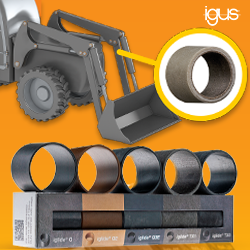ATLAS: DARPA and Boston Dynamics New Humanoid
Goals For NASA's 2020 Mars Rover Released
Robot Vacuum Simulator 2013
Introducing German Aerospace Center's Biped TORO
Rory McIlroy & The Robot In A Golf Challenge
DARPA Announces Winners of Virtual Robotics Challenge (VRC)
Kinect 2.0 for Windows Developer Kit Program Preorder
MakerBot Sold To Stratasys
Robots Of The Chernobyl Disaster
iRobot And Cisco's Ava 500 Telepresence
Linkbot Modular Robotic Platform Kickstarter
Chinese DIY Inventions
Arduino Yún: Arduino With A Wifi System-on-a-chip
The Official Arduino Robot
Makr Shakr
Records 1471 to 1485 of 1671
First | Previous | Next | Last
Featured Product

igus - triflex R robot dresspacks
Robotics and Automation - Featured Company

